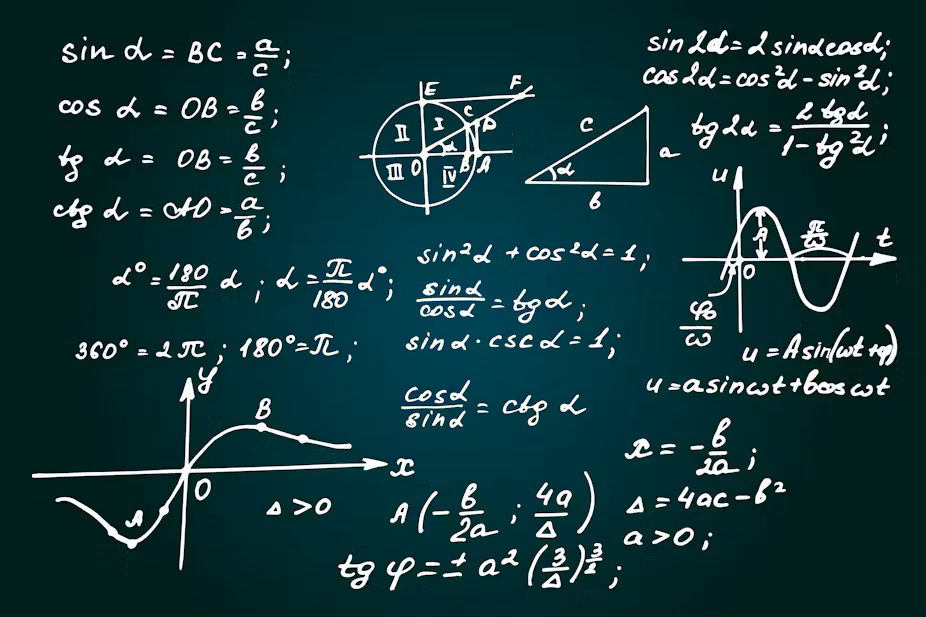Shutterstock
Why is mathematics so complicated? It’s a question many students will ask while grappling with a particularly complex calculus problem – and their teachers will probably echo while setting or marking tests.
It wasn’t always this way. Many fields of mathematics germinated from the study of real world problems, before the underlying rules and concepts were identified. These rules and concepts were then defined as abstract structures. For instance, algebra, the part of mathematics in which letters and other general symbols are used to represent numbers and quantities in formulas and equations was born from solving problems in arithmetic. Geometry emerged as people worked to solve problems dealing with distances and area in the real world.
That process of moving from the concrete to the abstract scenario is known, appropriately enough, as abstraction. Through abstraction, the underlying essence of a mathematical concept can be extracted. People no longer have to depend on real world objects, as was once the case, to solve a mathematical puzzle. They can now generalise to have wider applications or by matching it to other structures can illuminate similar phenomena. An example is the adding of integers, fractions, complex numbers, vectors and matrices. The concept is the same, but the applications are different.
This evolution was necessary for the development of mathematics, and important for other scientific disciplines too.
Why is this important? Because the growth of abstraction in maths gave disciplines like chemistry, physics, astronomy, geology, meteorology the ability to explain a wide variety of complex physical phenomena that occur in nature. If you grasp the process of abstraction in mathematics, it will equip you to better understand abstraction occurring in other tough science subjects like chemistry or physics.
From the real world to the abstract
The earliest example of abstraction was when humans counted before symbols existed. A sheep herder, for instance, needed to keep track of his flock of sheep without having any sort of symbolic system akin to numbers. So how did he do this to ensure that none of his sheep wandered away or got stolen?
One solution is to obtain a big supply of stones. He then moved the sheep one-by-one into an enclosed area. Each time a sheep passed, he placed a stone in a pile. Once all the sheep had passed, he got rid of the extra stones and was left with a pile of stones representing his flock.
Every time he needed to count the sheep, he removed the stones from his pile; one for each sheep. If he had stones left over, it means some sheep had wandered away or perhaps been stolen. This one-to-one correspondence helped the shepherd to keep track of his flock.
Today, we use the Arabic numbers (also known as the Hindu-Arabic numerals): 0,1,2,3,4,5,6,7,8,9 to represent any integer, that is any whole number.
This is another example of abstraction, and it’s powerful. It means we’re able to handle any amount of sheep, regardless of how many stones we have. We’ve moved from real-world objects – stones, sheep – to the abstract. There is real strength in this: we’ve created a space where the rules are minimalistic, yet the games that can be played are endless.
Another advantage of abstraction is that it reveals a deeper connection between different fields of mathematics. Results in one field can suggest concepts and ideas to be explored in a related field. Occasionally, methods and techniques developed in one field can be directly applied to another field to create similar results.
Tough concepts, better teaching
Of course, abstraction also has its disadvantages. Some of the mathematical subjects taught at university level – Calculus, Real Analysis, Linear Algebra, Topology, Category Theory, Functional Analysis and Set Theory among them – are very advanced examples of abstraction.
These concepts can be quite difficult to learn. They’re often tough to visualise and their rules rather unintuitive to manipulate or reason with. This means students need a degree of mathematical maturity to process the shift from the concrete to the abstract.
Many high school kids, particularly from developing countries, come to university with an undeveloped level of intellectual maturity to handle abstraction. This is because of the way mathematics was taught at high school. I have seen many students struggling, giving up or not even attempting to study mathematics because they weren’t given the right tools at school level and they think that they just “can’t do maths”.
Teachers and lecturers can improve this abstract thinking by being aware of abstractions in their subject and learning to demonstrate abstract concepts through concrete examples. Experiments are also helpful to familiarise and assure students of an abstract concept’s solidity.
This teaching principle is applied in some school systems, such as Montessori, to help children improve their abstract thinking. Not only does this guide them better through the maze of mathematical abstractions but it can be applied to other sciences as well.
For more insights like this, visit our website at www.international-maths-challenge.com.
Credit of the article given to Harry Zandberg Wiggins



